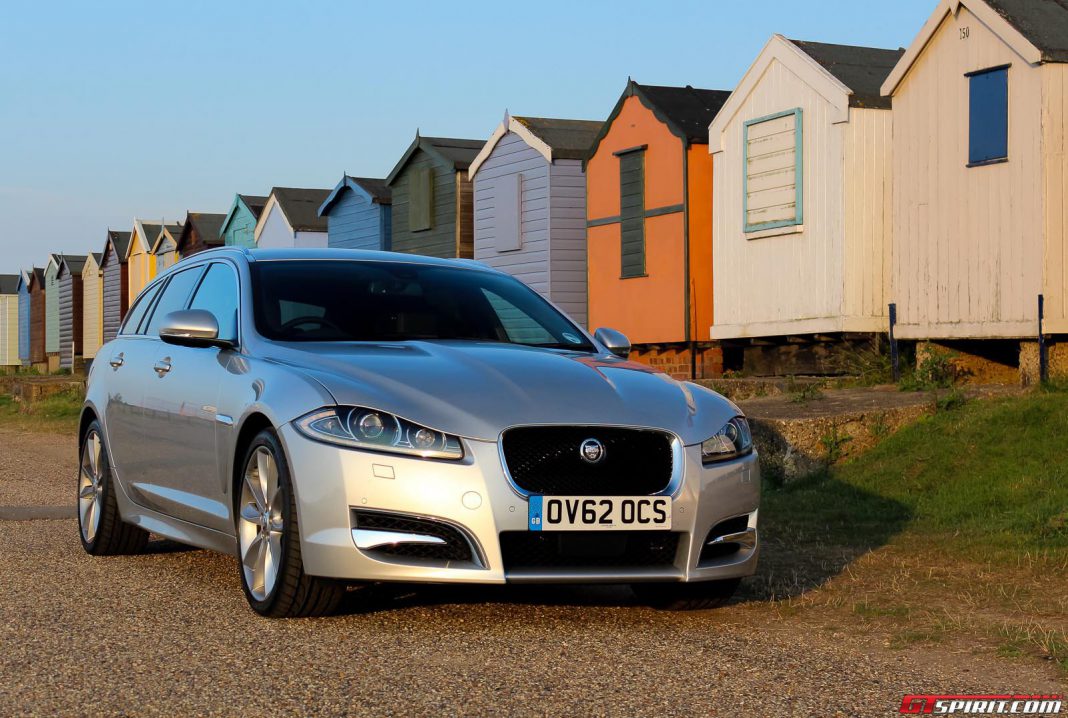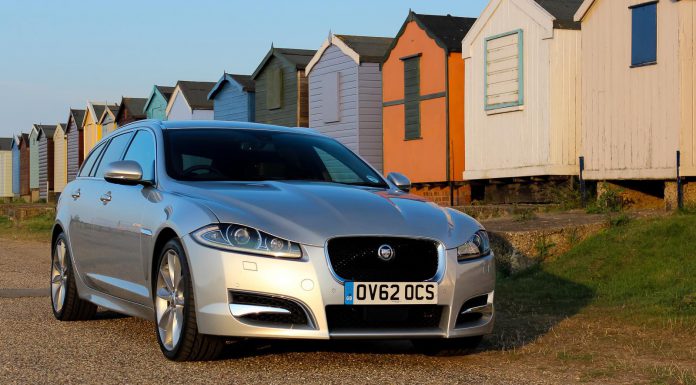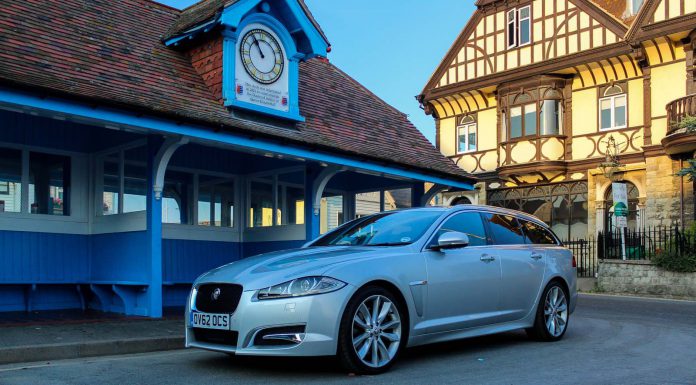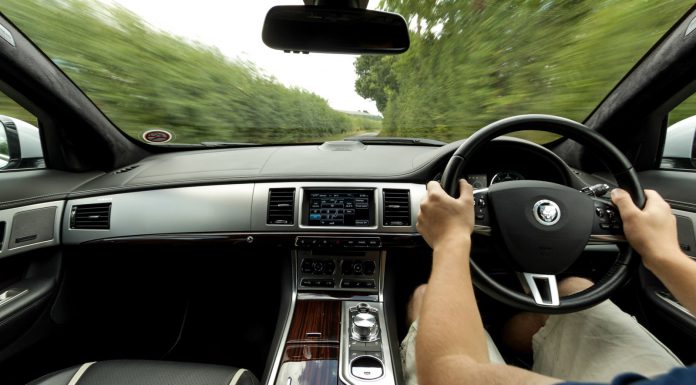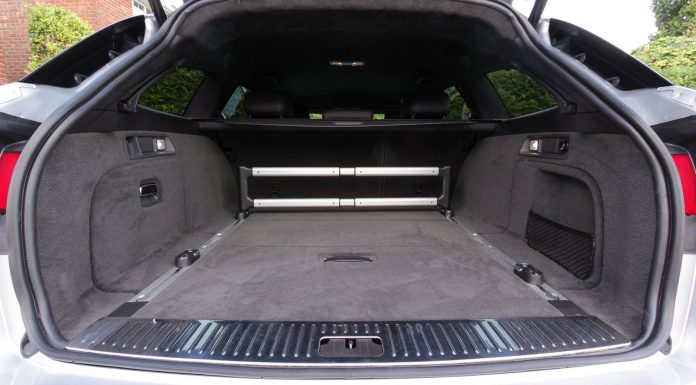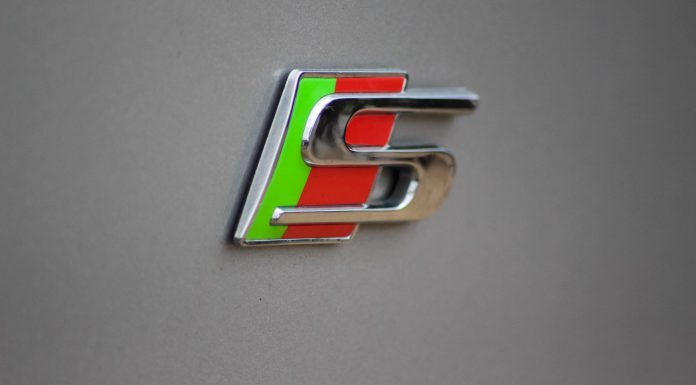The Jaguar XF was first introduced back in 2007 as a replacement for the ageing Jaguar S-Type. It served as the second new-era Jaguar model (after the Jaguar XK) penned by Ian Callum, a man who would bring Jaguar into the 21st Century with a bang. It certainly succeeded.
As it would be, the Jaguar XF was the last of the Ford-era Jaguar models, although to look at it, you wouldn’t be able to tell. The Jaguar estate had first reached fruition at the hands of Ian Callum, the Jaguar X-Type Estate being the first. It wasn’t until 2012 though that the Jaguar XF Sportbrake – the estate version of the XF – made its debut at the Paris Motor Show.
Almost a year later we found ourselves stepping into the driving seat of this magnificent cat. We had the car for a week long test.
Engine
The XF Sportbrake gets a choice of three diesel engines. Unlike the sedan models, the Sportbrake doesn’t get a petrol engine, let alone the fantastic XFR model. The choice of diesel engines includes an entry-level 2.2 litre inline-4 with an economic 160 hp turbocharged engine and an uprated 197 hp version of the same engine. Jaguar then offers a 3.0 litre turbocharged V6 with 237 hp and a slightly uprated version with 271 hp. The later was our pick of the bunch!
The 3.0 litre turbocharged V6 fitted to our test car is a Ford AJD-V6. Interestingly, the AJD-V6 was an engine originally developed for use in PSA Peugeot Citroën group cars. Fortunately, Jaguar Land Rover only shares it with Citroën C5 nowadays. Both the new Range Rover and the new Range Rover Sport use the same engine which is good enough for us!
The 271 hp model gets a graphite iron cross bolted block with high-strength aluminium cylinder heads. The engine features a double overhead camshaft, one operating the intake valves and the other operating the exhaust valves. The twin-turbochargers get air-to-air intercoolers with fuel fed to the engine via a Siemens Commonrail direct injection system.
Torque is a massive 600 Nm with an impressive 46 mpg economy figure. Co2 is 163 g/km which puts it about midrange for tax purposes (if you live in the UK). The economy figure proved to be pretty accurate during our test drive, despite a week of constant use, we didn’t once need to make a trip to the fuel station.
Chassis & Suspension
As the XF is a Ford-era car, it naturally uses a hand-me-down Ford chassis. To be precise, the XF is loosely based upon the Ford DEW platform which was developed at the turn of the century as a joint venture between Jaguar and Ford engineers. It provided the base for the Jaguar S-Type as well as the ill-fated 11th generation Ford Thunderbird and the Lincoln LS. It was never designed to with Saloon bodywork in mind, which makes the XF Sportbrake the first extended wheelbase version.
As you would expect, the design has moved on a little since its inception. The original reason for developing both Jaguar and Lincoln together was to cut development costs, although it actually worked out to be extremely expensive to manufacture post-development. Ford have since ditched the platform and Jaguar engineers have more or less free-reign.
Unlike other more recent Jaguar models, the XF chassis is a largely steel-based affair. We suspect that aluminium will feature heavily in any future successor, yet the current XF features a stretched version of the DEW chassis which allows it to meet current crash safety requirements. It also gets extra height for additional headroom and a raft of features to increase ride refinement including a special underbody tray, engine mounts and a double bulkhead between the engine bay and passenger compartment.
The suspension is reworked for the Jaguar XF Sportbrake. It gets self-levelling air suspension at the rear to replace the coil springs fitted to the saloon. This addition helps to level the suspension and ride heights when fully laden, maintaining the dynamics of an unladen car. Additionally, our test car was fitted with the Jaguar Adaptive Dynamics system which continuously monitors the suspension and makes up to 500 adjustments to the dampers every second.
Gearbox & Performance
The effortless feel is most likely down to the eight-speed ZF automatic transmission. It shifts gear seamlessly without a dip in power. The eight-speeder was introduced early last year for the entire model range so expect all XF Sportbrake’s to come equipped with the eight-speed. Unlike most petrol engined Jaguar owners, diesel XF Sportbrake owners will likely want to keep their car in automatic mode and enjoy the smooth ride.
As you would expect from a powerful twin turbocharged diesel engine, the power delivery is seamless. You get access to all 600 Nm of torque from as low as 2,000 rpm. 0 to 100 km/h happens in 6.6 seconds which feels plenty fast enough. Top speed (which we didn’t test!) is quoted at 250 km/h.
Design
The Jaguar XF Sportbrake is an Ian Callum designed vehicle so, as you would expect, it has a highly stylised look. Those that know a little about Jaguar’s heritage will know that the XF Sportbrake is only the second estate-bodied model Jaguar have produced. The first was the X-Type Estate, another Ian Callum design.
The front of the XF Sportbrake doesn’t look too different to the sedan. The overall resemblance is obvious. At the rear, the Sportbrake has an elongated roofline which slopes gradually downwards. It meets with a central styling line which runs the length of the car. From most angles, it looks muscular yet elegant.
This model, being the 3.0 litre V6 D S, features a set of visual updates which help bridge the gap between the XFR styling and the more mundane standard models. The front bumper features deeper air intakes and the side blades are finished in body colour. At the rear you get dual tailpipes and a rear spoiler.
Interior
Inside, the XF Sportbrake features a typical modern Jaguar layout. The centre console rises high out of the floor and our example featured lashings of inlaid woodgrain which actually didn’t look all that bad. Surfaces were covered with a dark chocolate brown leather with cream piping in places. The dash and door had aluminium accents while the roof liner was finished in alcantara.
Perhaps the biggest surprise was that the boot was less spacious than we thought it would be. The loading space is higher than most of its competitors which limits its capacity a little. The advantage over the Saloon is clear though. The hatch is wider and the height gives it the ability to swallow significantly larger loads than its Saloon counterpart.
Driving Experience
Our time with the XF Sportbrake immediately followed a long weekend (and many spirited miles) with Jaguar’s F-Type V6. With the keys in hand, and the F-Type disappearing into the distance, our first impressions of the XF Sportbrake were surprisingly favourable (afterall, who wouldn’t pick the glorious F-Type over a diesel estate!).
The first time I set foot in an XF was back in 2008 when it had just hit the market. That particular example was the slightly cheaper 3.0 litre V6 diesel which certainly impressed. Since 2008, the only other experience i’d had with the entry-level Jaguar model was a brief stint in the Jaguar XFR at the Jaguar Nurburgring facility a year ago. The XF Sportbrake was an entirely different prospect.
In Portfolio spec, the XF Sportbrake certainly stands out against most modern estate cars. The re-worked facia and the ’S’ badge on the back provides a dynamic look, similar in style to the saloon XFR.
The car was in our possession for an entire weekend and we intended to thoroughly explore its capabilities. Having taken possession of our ride at the office, our first experience would be during our drive home after a busy Monday working day. With the car set in auto mode it became clear that the Sportbrake was every bit as relaxing as we had expected.
At normal speeds between 30-50 mph, the car is barely breaking a sweat. The eight-speed gearbox does most of the work on its own, selecting the most efficient gear and sparing the engine from any stress. The road noise is minimal and the ride is expertly dampened. The dampening and road noise are particularly impressive considering that our road test took place on UK roads (which aren’t known for their smoothness…).
Our route home takes us on a 10-mile section of dual carriage way which allowed us to test cruising at motorway speeds for the first time. Acceleration is impressive off the slip-way, a quick glance down at the speedometer confirms that we need to apply the brakes. Those 600 Nm of torque provide effortless acceleration. One thing i’ve never been too keen on with Jaguar’s is the radar guided cruise control. My blast along the dual carriageway confirms that the closest setting still doesn’t allow me to get as close as I would want to the car in front. I suspect this has more to do with my driving style than any inherent problems with this particular function.
At a steady 70-80 mph cruise, the XF Sportbrake’s V6 powerplant is again in efficiency mode. The revs are ticking over at no more than 1,800 rpm in eighth gear, with cruise control set, it could potter along at this pace all day. The ride is again comfortable and refined. Distant memories of the 3.0 litre XF saloon suggest that the ride might be a little compromised by the larger wheels, although the aesthetics more than make up for it.
The final part of our daily journey takes place on some fast-paced country roads. The XF Sportbrake feels larger and heavier on the tighter sections of road. Still in Auto mode, the drive is best taken at a leisurely pace as the gearbox is naturally reluctant to shift from anything lower than the optimum gear. This isn’t a criticism though, most who own this car will use it on a daily basis and will expect class-leading economy figures.
With all the dynamic mode buttons set and manual selected, the country road section of our drive starts to become a little more exciting. The XF Sportbrake isn’t a car you’ll find yourself racing to extremes. Even in manual mode, it is better at eight-tenths, wafting at pace. The dynamic suspension settings offer a slightly stiffer ride and reduce comfort marginally. Yet, overall, the feeling is still one of comfort, despite an ability to beat all but the most extreme estate cars.
Conclusion
In conclusion, we genuinely like the Jaguar XF Sportbrake. It has an interesting blend of luxury and stealth performance, yet it is one of those cars you can use everyday without fear of breaking the bank. Looking back at our experiences in the Jaguar XF Saloon and comparing them to the Jaguar XF Sportbrake, the later is slightly softer and more comfortable.
As a fleet car and a car to transport your family in, the Jaguar XF Sportbrake takes some beating. It would certainly be high up our list if we were shopping for an everyday estate car.

